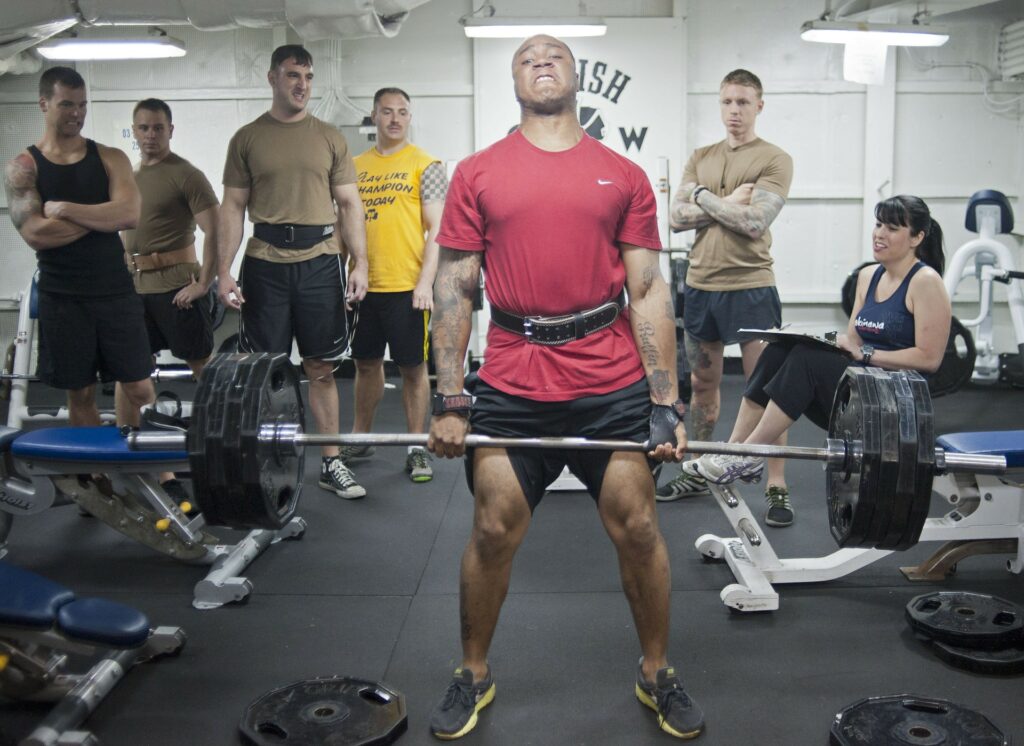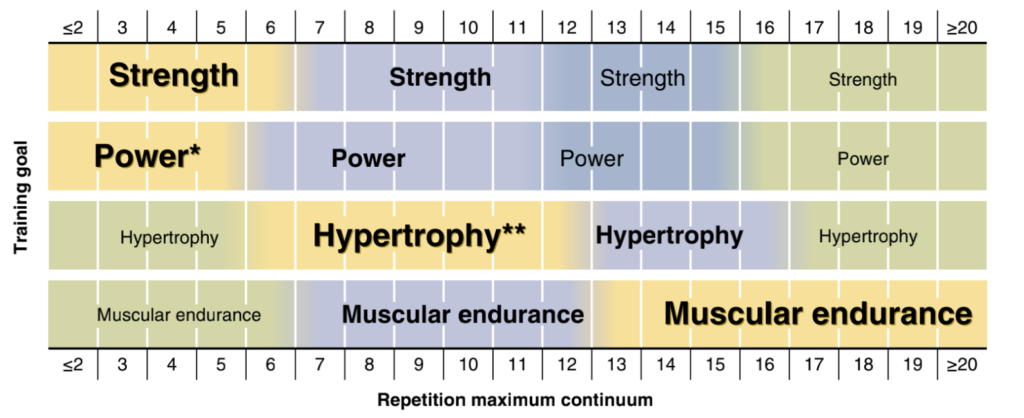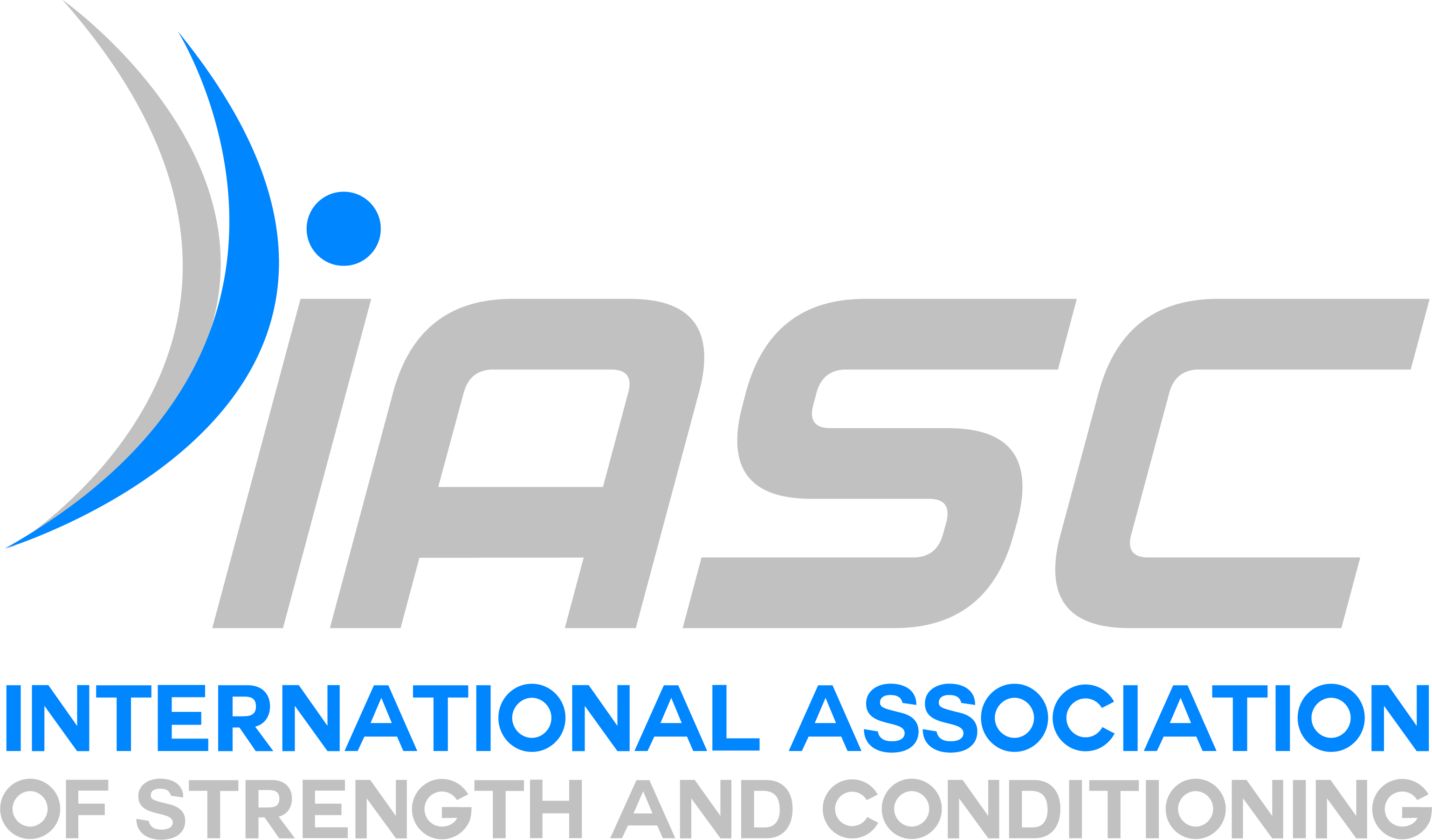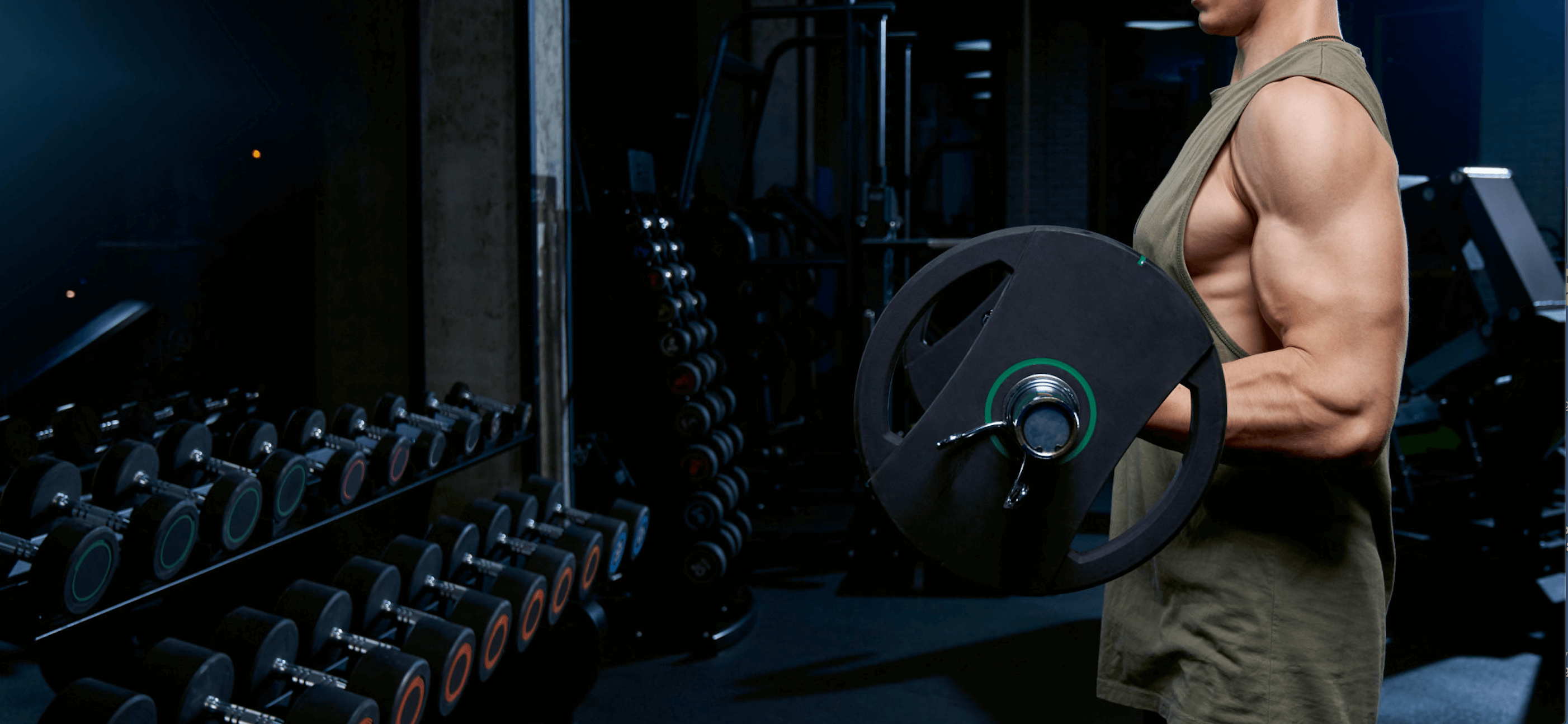Today we would like to talk aboutan important topic that is Resistance Training Program Design Variables.
The popularity of resistance training has grown immensely over the past 25 years, with extensive research demonstrating that not only is resistance training an effective method to improve neuromuscular function, but it can also be equally effective in maintaining or improving individual health status.
However, designing a resistance training program is a complex process that incorporates several variables and key training principles. The effectiveness of a resistance training program to achieve a specific training outcome (i.e. muscular endurance, hypertrophy, maximal strength, or power) requires the recognition and manipulation of seven variables, these include:
(i) Needs Analysis;
(ii) Exercise Selection;
(iii) Training Frequency;
(iv) Exercise Order;
(v) Training Load and Repetition;
(vi) Volume and
(vii)Rest Period.
The adaptations associated with each variable must be understood by the strength and conditioning coaches to implement successful training.
Moreover, the individual needs of an athlete/client are paramount in determining the specifics of the number of repetitions, sets, and training intensity. Importantly, data is available that demonstrates how to determine an athlete’s needs and reveals systematic strategies to create a training prescription for the long-term success of the athlete by manipulating these training variables. Now have a look at each of these variables.

- Needs analysis
Before designing a training program by a strength and conditioning coach or a personal trainer, a needs analysis of the athlete/client should be performed to design the most effective strength training program.
A needs analysis for strength training involves questioning, the main goal of the resistance training program, muscle groups that need to be trained, the energy system of training (e.g., anaerobic, aerobic), muscle action (e.g., isometric, eccentric actions), athlete/client training experience, and main sites of injury in athlete/clients or her medical history.
2. Exercise selection
the second Resistance Training Program Design Variables is exercise selection. It is choosing exercises for a resistance training program. there are hundreds of resistance training exercises to choose from for designing a program. To select any exercise, the coaches must pay attention to the types of exercises, the movement and muscular requirements of the sport, the athlete’s training experience, the equipment available, and the amount of training time available. Exercises can be grouped into three categories based on how they relate to your goals—power, primary and assistance exercises.
Power exercises are explosive movements in which the lifter attempts to move the weight as quickly and explosively as possible. Some classic power exercises include the power clean, snatch, and push jerk. Power exercises use many muscle groups and require the movement of several joints.
Primary exercises train the prime movers in a particular movement, involve two or more primary joints (multijoint exercises), and are typically major muscle group exercises(i.e., chest, shoulder, back, hip, or thigh), such as the squat, dead-lift and bench press.
Assistance exercises train predominantly one muscle or muscle group associated with the primary exercise (i.e., upper arm, abdominal muscles, calf, neck, forearm, lower back, or anterior lower leg), involve only one primary joint (single-joint exercises), and are considered less important to improving sports performance.

3. Training frequency
Kraemer and Ratamess defined resistance training frequency as several sessions performed during a specific time frame, (i.e., number of days per week). The American College of Sports Medicine (ACSM) prescribes training two to three days per week and National Strength Conditioning Association prescribes training three days per week using a full body resistance training program for improving muscular fitness in public and novice athletes.
It is wise for athletes in training to ignore these exercise recommendations for the general public. Indeterminate and professional athletes need additional training days per week. Intermediate athletes should train four to five days per week and professionally trained athletes four to six days per week.
A common way to add days to your workout frequency is to use a split routine in which you completely different sets of exercises on different days of the week. This way allows you to work on some body parts and rest others on a given day. It also permits you to train on consecutive days; since different muscle groups are being trained on different days, you don’t have to worry about training fatigued muscles from the day before.
Exercise frequency is also influenced by the overall amount of physical stress, so the strength and conditioning professional must consider the effects of all forms of exercise. If the athlete’s program already includes aerobic or anaerobic (e.g., sprinting, agility, speed-endurance, plyometric) training, sports skill practice, or any combination of these components, the frequency of resistance training may need to be reduced.

4. Exercise order
The order of exercise is fourth Resistance Training Program Design Variables. Workouts should be ordered in a way that allows the most important exercises to be done first. When performing power exercises, the lifter should be at his or her freshest in order to minimize fatigue.
Therefore, if you will be performing power movements, you should place them first in the workout program, before the primary exercise. Power exercises are important to include in a well-balanced resistance training program, especially for those seeking to improve athletic performance. Use caution with these exercises, though, because the proper form is vital to their performance.
Instruction and supervision from a qualified exercise professional are always recommended when performing power lifts. Since Primary exercises (multijoint exercises) work for multiple muscle groups, you should perform them immediately after power exercises and before assistance exercises. Assistance exercises are generally performed after primary exercises so that the individual muscle groups don’t get fatigued before they are called upon to execute multijoint movements.
The basic strength for a rank novice is the primary training consideration, and this means that squats should always be done first. Between strength movements that use some or most of the same muscle groups, it is useful to insert exercises that use other muscles so that some measure of recovery can occur. Bench presses or presses are commonly done between squats and deadlifts so that the best performance can be obtained from both of these lower-body exercises after some rest between them.
The basic rules for exercise order are should be as follows:
- Most important to least important
- Large muscle group before small muscle group exercises
- Multi-joint before single-joint exercises
- Alternate push/pull exercises for total body sessions
- Alternate upper/lower body exercises for total body sessions
- Explosive/power type lifts (e.g., power clean) and plyometric exercises (hurdle jump or medicine ball) before not-explosive exercises
- and single-joint exercises
- Most intense to least intense

5. Training load (Intensity) and repetition
Load is number five Resistance Training Program Design Variables. Load most simply refers to the amount of weight assigned to an exercise set and is often characterized as the most critical aspect of a resistance training program. And repetition refers to the number of times an exercise can be performed and is inversely related to the load lifted; the heavier the load, the lower the number of repetitions that can be performed.
The training load can be determined by either RM (i.e. the greatest amount of weight lifted with the correct technique for a specific number of repetitions) or some percentage of the one repetition maximum (1RM).
1RM = maximum weight that can be lifted one time
10RM = maximum weight that can be lifted ten times in a single set
All RM tests that are lighter than a 1RM are, by definition, done with a sub maximum weight, since a 1RM defines maximum. A 5RM will be done with a weight that is 85 to 90% of the 1RM and is thus submaximal. It is very heavy relatively – the maximum that can be done for 5 reps – but it is still submaximal to 1RM.
There is no single repetition scheme that is appropriate for achieving all training goals. The number of reps per set is important because different numbers of reps produce different types of adaptations.
Percent of the 1RM and Repetitions Allowed (%1RM–Repetition Relationship)
| %1RM %1RM | Number of repetitions allowed |
| 100 | 1 |
| 95 | 2 |
| 93 | 3 |
| 90 | 4 |
| 87 | 5 |
| 85 | 6 |
| 83 | 7 |
| 80 | 8 |
| 77 | 9 |
| 75 | 10 |
| 70 | 11 |
| 67 | 12 |
| 65 | 15 |
There is no single repetition scheme that is appropriate for achieving all training goals. The number of reps per set is important because different numbers of reps produce different types of adaptations.
The neuromuscular adaptations to resistance training depend on the amount and modality of resistance used. Compared with lower resistances, heavier resistances will allow lower numbers of repetitions (1–6) but will lead to greater improvements in maximal strength. Thus, if maximal strength development is desired, heavier loads should be used.
Alternately, if muscular endurance is the goal, a lower load should be used, which will, in turn, allow a greater number of repetitions (12–15RM) to be conveyed. Alternately, adaptations specific to muscular hypertrophy necessitate a differential training style. It recommends a range of approximately 6 to 12 repetitions to optimize metabolic stress leading to hypertrophic adaptations.
Strength is the ability to produce force: high force production requires heavy weights, and maximum force production requires 1RM effort. So sets consisting of single reps, doubles, and triples using 90 to 100% of 1RM loads involve the highest force production and build the most strength.
Muscular hypertrophy is traditionally trained by using higher reps (8 to 12 or more) at lighter weights (65 to 80% of 1RM) while restricting rest between sets so that subsequent sets are performed in a state of fatigue and vascular occlusion – the “pump.”
Power, the ability to demonstrate maximum force production as quickly as possible, can be developed by using lower numbers of reps (1-3) performed at maximum velocity with loads between 50 and 75% of 1RM.
Sets of 20 or more reps will significantly improve muscular endurance, but will not produce large strength gains due to the lighter weights necessarily involved, and this is certainly not optimal for any athlete with the primary goal of improving either power or strength.
| Training goal | Load (%1RM) | Goal repetitions |
| Strength | ≥85 | ≤6 |
| Power Single effort events Multiple effort events | 80-90 75-85 | 1-23-5 |
| Hypertrophy | 67-85 | 6-12 |
| Muscular endurance | ≤67 | ≥12 |
Reprinted from essentials of strength training and conditioning

Relationship Between Repetition Maximum ranges with various training goals.
Reprinted, by permission, from NSCA, 2008, Resistance training, T.R. Baechle, R.W. Earle, and D.
Wathen. In Essentials of strength training and conditioning, 3rd ed., edited by T.R. Baechle and R.W.
Earle (Champaign, IL: Human Kinetics).
6. volume
Volume is sixth Resistance Training Program Design Variables that describes the total amount of work performed within a training session, and a set is a group of repetitions sequentially performed before the athlete stops to rest. Volume is typically calculated as: (i) total repetitions (sets × repetitions); or (ii) volume load (sets × repetitions × resistance). Training volume is prescribed in terms of the number of repetitions per set, the number of sets per session, and the number of sessions per week. The importance of training volume for maximal strength and muscle size gains during the early phases of resistance training has been previously demonstrated.
Single-set training may be appropriate for untrained individuals or during the first several months of training, but many studies indicate that higher volumes are necessary to promote further gains in strength, especially for intermediate and advanced resistance-trained athletes.
Training volume directly depends on the athlete’s strength training goal.
| Training goal | Goal Repetitions | SETS |
| Strength | ≤6 | 2-6 |
| Power Single effort events Multiple effort events | 1-23-5 | 3-53-5 |
| Hypertrophy | 6-12 | 3-6 |
| Muscular endurance | ≥12 | 2-3 |
Reprinted, by permission, from Essentials of strength training and conditioning, 3rd ed., edited by T.R. Baechle and R.W. Earle (Champaign, IL: Human Kinetics).
Volume based on training goals
7. Rest period
The last Resistance Training Program Design Variables is rest period. Rest period length between sets and exercises is an important acute program variable in workout design.
Rest periods between sets and exercises determine the magnitude of ATP-PC energy source resynthesis and the concentrations of lactate in the muscle and blood. A short rest period between sets and exercises significantly increases the metabolic, hormonal, and cardiovascular responses to an acute bout of resistance exercise, as well as the performance of subsequent sets.
For advanced training emphasizing absolute strength or power, rest periods of at least two minutes are recommended for structural exercises such as squats, power cleans, and deadlifts, using maximal or near-maximal loads; less rest may be needed for smaller-muscle-mass exercises or single-joint movements (American College of Sports Medicine 2009; de Salles et al. 2009). Advanced lifters may require longer rest periods to accompany the heavy loads they need to cause strength gains. This is large because these loads are near the lifter’s genetic potential, and to attain these force levels, maximizing energy store recovery is crucial (de Salles et al. 2009).
Athletes who are interested in hypertrophy often use a short to moderate rest period of 30 seconds to 1.5 minutes. And a muscular endurance training program has very short rest periods, often less than 30 seconds.
| Training goal | Rest period length |
| Strength | 2-5 min |
| Power Single effort events multiple effort events | 2-5min |
| Hypertrophy | 30 s to 1.5 min |
| Muscular endurance | ≤30 s |
Earle (Champaign, IL: Human Kinetics), 401.
Rest Period Length Based on the Training Goal
References:
- Resistance training, T.R. Baechle, R.W. Earle, and D. Wathen. Human Kinetics.2008.
- Essentials of strength training and conditioning, 3rd ed., edited by T.R. Baechle and R.W.Earle (Champaign, IL: Human Kinetics).
- McMaster, D Travis; Cronin, John PhD; McGuigan, Michael PhD, CSCS.Forms of Variable Resistance Training.Strength and Conditioning Journal: February 2009 – Volume 31 – Issue 1 – p 50-64
- Stephen P. Bird, Kyle M. Tarpenning and Frank E. Marino. Designing Resistance Training Programmes to Enhance Muscular Fitness.Sports Med 2005; 35 (10): 841-851
- Kraemer WJ, Nindl BC, Ratamess NA, et al. Changes in muscle hypertrophy in women with periodized resistance training. Med Sci Sports Exerc. 2004;36:697-708.
- Rhea MR, Alvar BA, Burkett LN, Ball SD. A meta-analysis to determine the dose-response for strength development. Med Sci Sports Exerc. 2003;35:456-464.
- Kraemer WJ, Ratamess NA. Fundamentals of resistance training: progression and exercise prescription. Med Sci Sports Exerc. 2004;36:674-688.
- Designing resistance training programs / Steven J. Fleck, William J. Kraemer. — Fourth edition.
- NASM PERSONAL FITNESS TRAINING.National Academy of Sports Medicine, Jones & Bartlett Learning
- Plowman SA, Smith DL. Exercise Physiology for Health Fitness and Performance (Fifth Edition). LWW. 2017.







